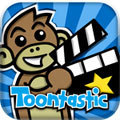I am wrestling with my research topic for my literature review and research proposal for my Research Methodologies class at SJSU. I'm fascinated by the way that iPad book apps combine many types of reading and learning. I would like to delve into understanding how children respond to digital reading, especially multimedia, multimodal types of reading. But this research is just beginning to emerge. So for my initial literature review, I've had to broaden the scope of my topic to investigating digital reading more broadly.
I'd like to keep in mind the key questions that Dr. Josepch Stetar (2009), of Seton Hall University, posed in his Slideshare "Developing Research Questions".
Criteria for identifying research problem:
- Must be interesting enough to hold my interest
- Must be within my range of competence.
- Must be a manageable size
- Must have some basis in theory—ie, topics found in the lit review
- Must have the potential to make an original contribution—can’t be a duplicate of something that’s already been done.
- Must be based on obtainable data—research plan must be viable and practical.
- Must permit me to demonstrate my independent mastery of both subject and research method
Clearly, I have a long way to go. At the moment, I am interested in seeing how I would extend on the research started by the Cooney Foundation (Chiong, et al., 2012), but extending it to school-aged children. The Cooney Foundation research focuses on children ages 3-6 and how they read book apps with their parents. I'm interested in how children ages 6-10 read book apps, the ways that they absorb information, interact with the digital elements, and comprehend the story/information. I really want to know whether book apps appeal to children because they seem so much like games and movies, or if they are drawing children into a book-like experience.
I wonder if Slater would argue that my topic is still too broad, that I need to focus it down more to just one or two variables. I suppose the Cooney research from 2012 (Chiong, et al., 2012) did this by comparing comprehension from a print, ebook and enhanced book app for similar books. I can see doing this with the Magic School Bus: Oceans book, which has a print and excellent iPad book app - perfect for a 6 to 9 year old.
The dilemma that I'm facing is that there is very little research out there right now on this specific topic. So to meet the literature review element of my assignment (15 or more scholarly articles), I need to look more broadly at digital reading. One of the aspects I will examine is how other researchers have structured their investigations into students digital reading, say with Kindles.
I'm curious if theoretical articles that define and identify issues within this area are a part of the literature survey. They are not other studies, per se, but they lay an important foundation, especially in this developing field.
Ahh, much to ponder. But it's certainly holding my interest!
Chiong, C., Ree, J., Takeuchi, L. and Erickson, I. (2012).
Comparing parent-child co-reading on print, basic and enhanced e-book platforms. The Joan Ganz Cooney Center. Spring 2012. Retrieved from
http://joanganzcooneycenter.org/Reports-35.html.
Stetar, J. (2009). Developing Research Questions. Slideshare. Retrieved from
http://www.slideshare.net/mikeparent/developing-research-question.







